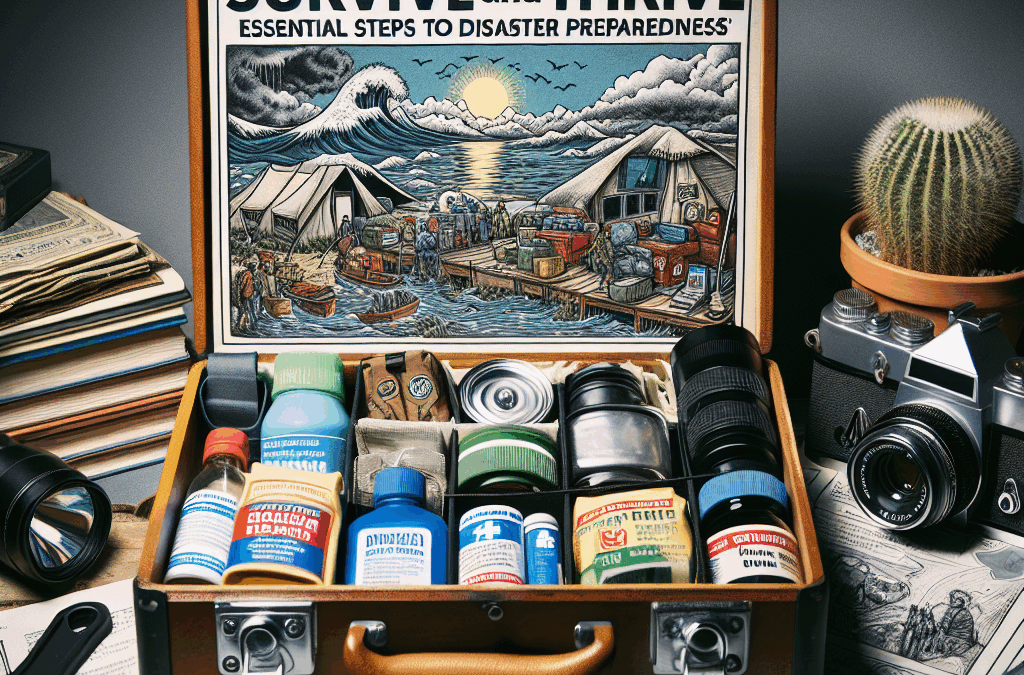In an unpredictable world, the adage “hope for the best but prepare for the worst” rings especially true. Disasters can strike at any moment—be they natural calamities like hurricanes, earthquakes, or floods, or man-made crises such as industrial accidents or civil unrest. The key to navigating these challenges lies in preparedness. Here’s how you can ensure both survival and resilience in the face of adversity.
*Understanding Risks: Identify Potential Disasters in Your Area**
The first step toward effective disaster preparedness is understanding what risks lurk in your environment. Each region faces unique threats based on geography and climate. For instance, coastal areas may be prone to hurricanes and flooding, while regions near fault lines might experience earthquakes. To pinpoint potential disasters specific to your locality, consult resources like local government websites or emergency management agencies. They often provide comprehensive assessments of risks prevalent in your area.
Once you’ve identified these hazards, take note of their historical frequency and severity. This valuable information will guide you in prioritizing which preparations are most critical for your household.
*Building Your Emergency Plan: A Blueprint for Survival**
With a clear understanding of potential threats, it’s time to draft an emergency plan tailored to your family’s needs. Start by outlining escape routes from your home and identifying safe meeting points outside if evacuation becomes necessary. Remember that communication is vital; establish a system for keeping in touch with loved ones should traditional channels become compromised.
Moreover, include specific roles for each family member within your plan—designate who will grab essential items during an evacuation or who will check on elderly relatives nearby. Regularly practice these scenarios through drills so that everyone knows exactly what to do when the moment arrives.
*Stocking Up: The Ultimate Emergency Supply Checklist**
A well-stocked emergency supply kit can mean the difference between mere survival and thriving through a crisis. Begin with the basics: water (one gallon per person per day), non-perishable food items (think canned goods and energy bars), a flashlight with extra batteries, and basic first-aid supplies.
Thank you for reading this post, don't forget to subscribe NOW for FREE!
Don’t forget important documents! Store copies of identification papers, insurance policies, medical records, and any other crucial paperwork in a waterproof container within your kit. Additionally, consider including tools like a multi-tool knife or duct tape—these can prove invaluable during emergencies.
Lastly, tailor your supplies based on individual needs; if you have pets or young children, ensure their requirements are met too!
*Staying Informed: The Importance of Communication and Training**
Disaster preparedness doesn’t end once you’ve created a plan and assembled supplies; staying informed is equally crucial. Sign up for local alerts regarding weather updates or emergency notifications through text messages or apps provided by governmental organizations.
Furthermore, invest time into training opportunities available within your community. Programs like CPR certification courses or FEMA training workshops equip individuals with skills that could save lives during emergencies.
In conclusion, disaster preparedness is not just about surviving but also about fostering resilience within our communities. By understanding risks unique to our area, crafting detailed plans tailored to our families’ needs, stocking vital supplies thoughtfully, and remaining informed through education and communication channels—we set ourselves up not just to survive but truly thrive amidst chaos when it inevitably arises.






